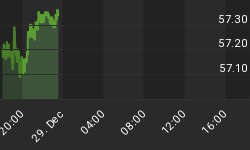Like my whiny children, who after 30 minutes into a 6 hour car drive, investors are asking themselves, "Are we there yet?" After all, the SP500 is down a little over 8% from their highs in the past 3 weeks, and investors want to know if the selling is done and if this is a time to buy. Of course, it was only 3 short weeks ago that we were hearing how this market was a buying opportunity of a lifetime, so if you were dumb enough to buy that nonsense, then consider yourself lucky as equities are now on sale. Wow, what a bargain!
Looking at the sentiment picture, we are no where near a durable bottom that will lead to a sustainable price move. There are very few bears out there. Market bottoms occur when investors are bearish, and sustainable rallies start with short covering and with a lot more investors on the sidelines ready to chase prices higher. These conditions do not exist in any aspects of the data. Let's be very clear here. The market is very oversold, and I am sure a "dead cat" bounce is in the works. If your modus is to capture the next 2-3%, then by all means have at it. Beyond that, I don't think that we are there yet!
The "Dumb Money" indicator (see figure 1) looks for extremes in the data from 4 different groups of investors who historically have been wrong on the market: 1) Investors Intelligence; 2) MarketVane; 3) American Association of Individual Investors; and 4) the put call ratio. This indicator is now neutral.
Figure 1. "Dumb Money"/ weekly
Figure 2 is a weekly chart of the SP500 with the InsiderScore "entire market" value in the lower panel. From the InsiderScore weekly report: "Market-wide sentiment turned positive last week as buyers outnumbered sellers for just the second time this year (and first time during a high volume week). The number of buyers jumped nearly 63% week-over-week while the number of sellers fell more than -28% over the same period. Small and mid-caps from the Russell 2000 continued to be the main positive sentiment driver as sentiment within the S&P 500 was more mixed. The Financial, Technology, Industrial Goods and Consumer Discretionary sectors each showed buy biases. Activity remained rather limited within the Materials and Energy sectors, and, there were more neutral readings of sentiment in the Healthcare, Utilities and Consumer Staples arenas. Qualitatively and on a company-level, we're seeing much more actionable buying than actionable selling and we've been pleasantly surprised to see buying crop at companies coming off of well-received earnings announcements."
Figure 2. InsiderScore "Entire Market" value/ weekly
Figure 3 is a weekly chart of the SP500. The indicator in the lower panel measures all the assets in the Rydex bullish oriented equity funds divided by the sum of assets in the bullish oriented equity funds plus the assets in the bearish oriented equity funds. When the indicator is green, the value is low and there is fear in the market; this is where market bottoms are forged. When the indicator is red, there is complacency in the market. There are too many bulls and this is when market advances stall. Currently, the value of the indicator is 69.07%. Values less than 50% are associated with market bottoms. Values greater than 58% are associated with market tops. It should be noted that the market topped out in 2011 with this indicator between 70% and 71%.
Figure 3. Rydex Total Bull v. Total Bear/ weekly
TheTechnicalTake offers a FREE e-newsletter: HERE
















